Paint Like An Egyptian!
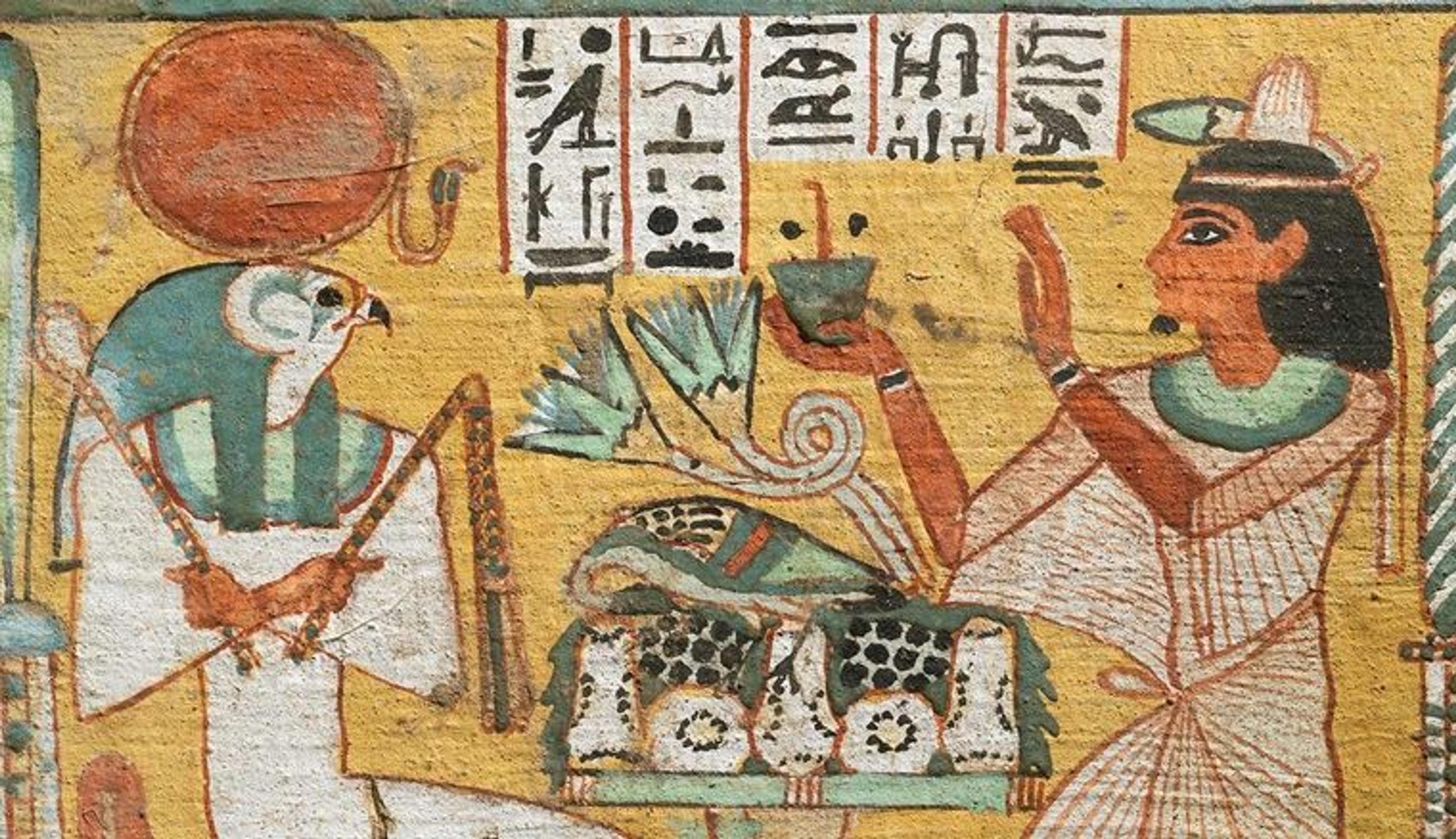
Stela of a man called Aafenmut (detail), ca. 924–889 B.C. From Egypt. Wood, paint, gesso, 9 1/16 x 7 3/16 x 1 3/8 in. (23 x 18.2 x 3.5 cm). The Metropolitan Museum of Art, New York, Rogers Fund, 1928 (28.3.35)
How did ancient Egyptians create dazzling paintings? Examples can be found on the walls of their palaces, tombs, and temples, and they also painted on objects, such as stelae (carved or painted slabs of stone or wood) or coffins. But how, and with what, did they make these colorful images? Let’s explore the process, and then try making your own tools for painting!
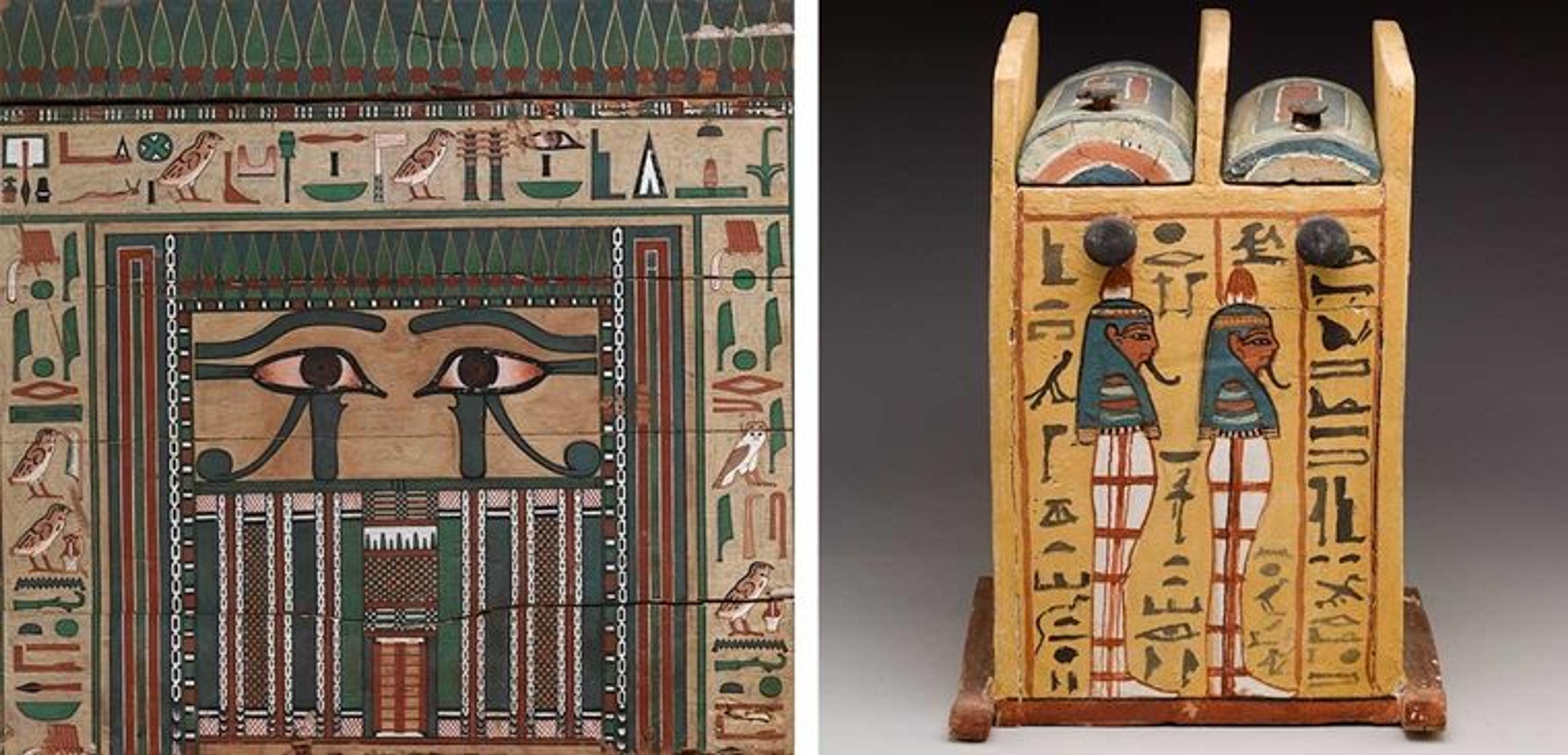
Two examples of paintings on wooden objects from ancient Egypt. Left: Coffin of Khnumnakht (detail), ca. 1802–1640 B.C. From Egypt. Wood, paint, 81 11/16 x 20 3/8 x 26 3/4 in. (207.5 x 51.8 x 68 cm). The Metropolitan Museum of Art, New York, Rogers Fund, 1915 (15.2.2a, b) | Right: Shabti box of Paramnekhu, ca. 1279–1213 B.C. From Egypt. Wood, gesso, paint, 11 1/4 x 8 1/4 x 6 5/16 in. (28.5 x 20.9 x 16 cm). The Metropolitan Museum of Art, New York, Funds from various donors, 1886 (86.1.14a-c)
Let's start with the paint itself. In ancient Egypt, pigments—the materials which give paints their color—were mostly made from minerals that were gathered or dug from the earth. They were ground down to a fine powder and then mixed with a binder (something to hold it all together) such as gum Arabic. Here are some of the most common pigment materials used in ancient Egypt:
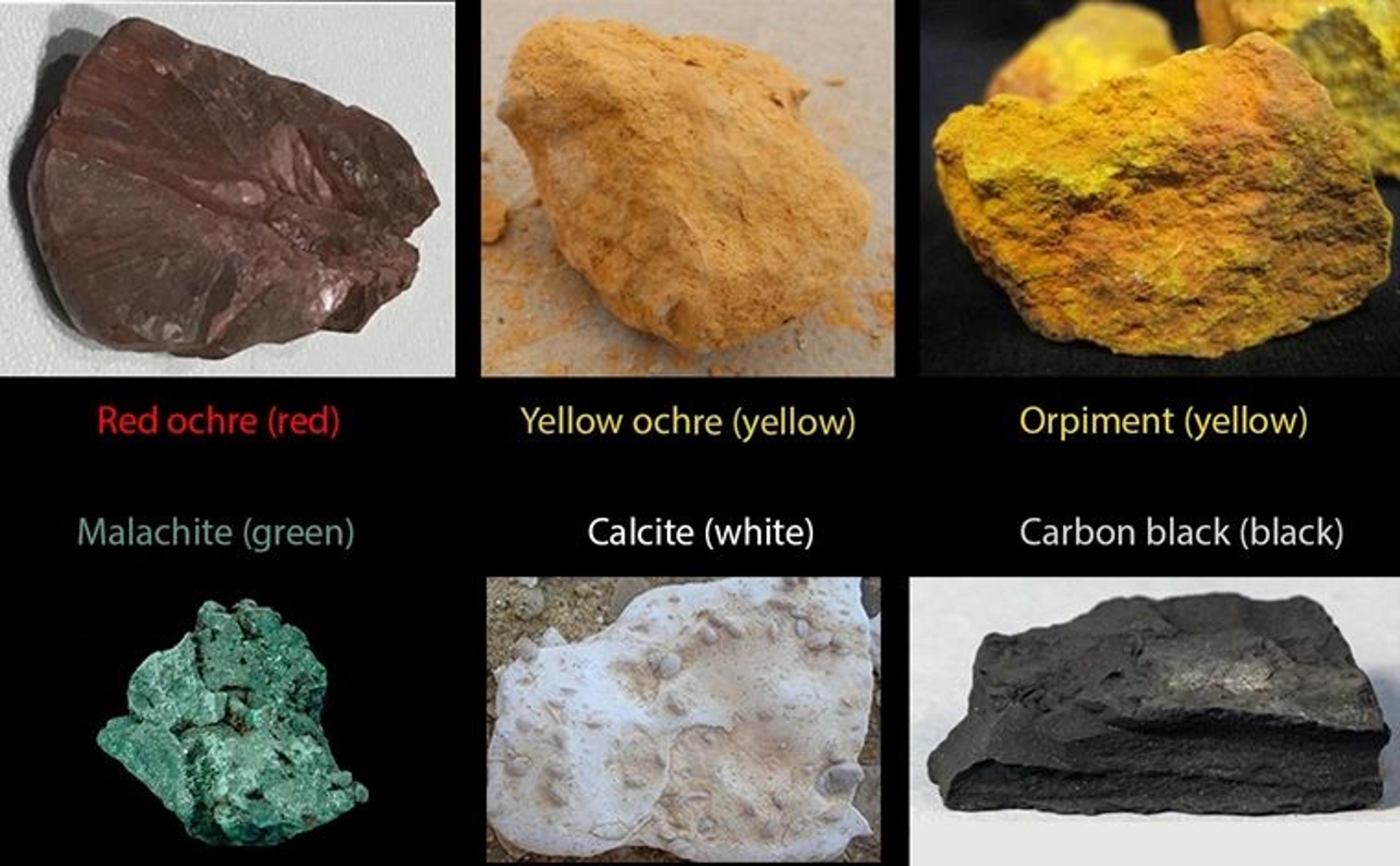
Clockwise from top left: red ochre, image courtesy of Hilary Becker, Binghamton University; yellow ochre, image courtesy of Ruth Siddall, University College London; orpiment, image courtesy of Ruth Siddall; carbon black, image courtesy of Caroline Roberts and photographed by Randy Stegmeyer/Ann Asplund for Ancient Color, a special exhibition at the Kelsey Museum of Archaeology; calcite in the form of chalk, image courtesy of Ruth Siddall and Charlie Underwood; and malachite, image courtesy of Caroline Roberts and photographed by Randy Stegmeyer/Ann Asplund for Ancient Color, a special exhibition at the Kelsey Museum of Archaeology
The most common blue color that you see in ancient Egyptian paintings is not found in nature. This pigment, called Egyptian blue, was made by mixing different natural ingredients together and heating them to a high temperature. You can think of it like a math problem: sand + lime + sodium carbonate + copper compound + fire = Egyptian blue.
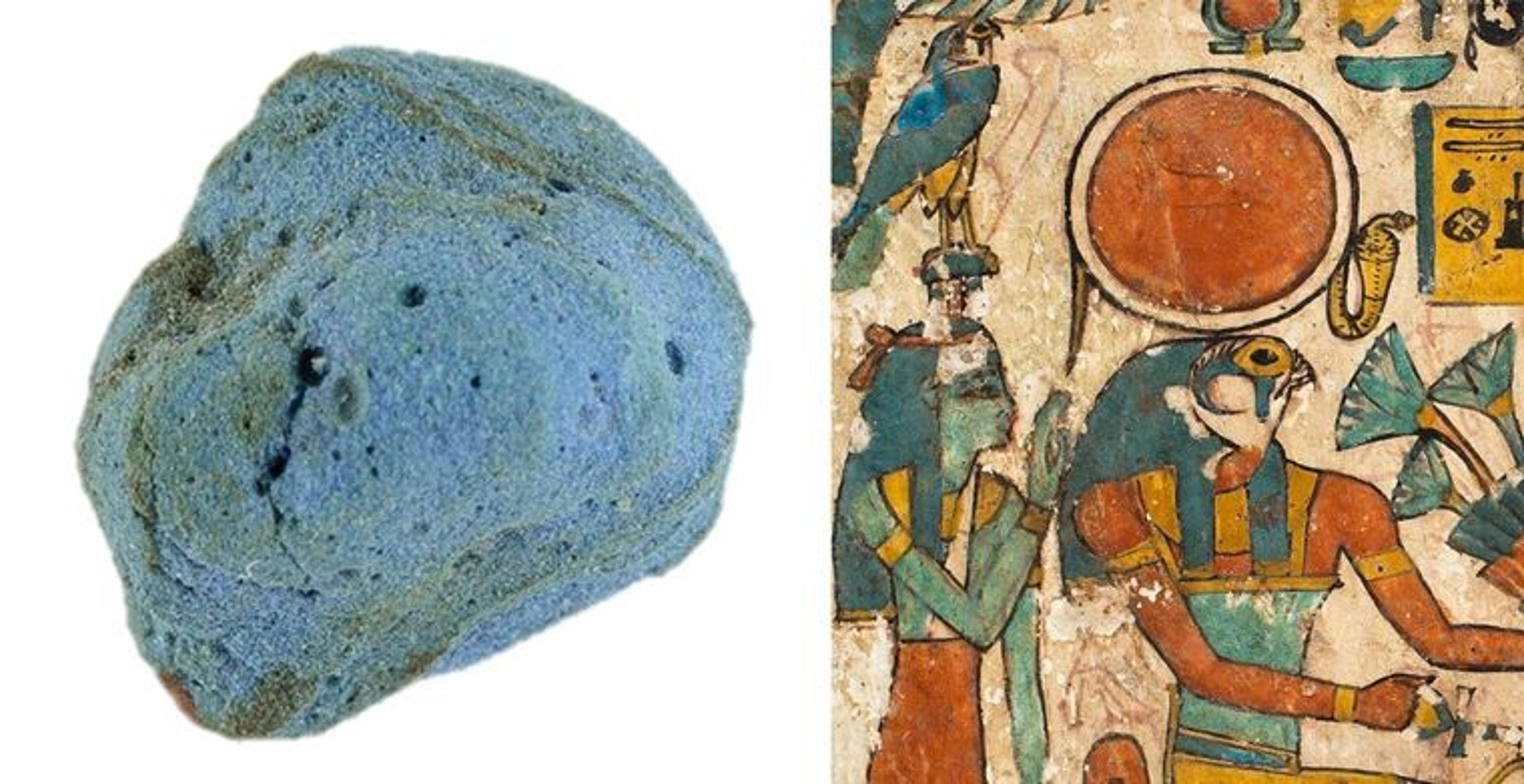
Left: Lump of Egyptian blue , ca. 1479–1458 B.C. From Egypt. Paste, 3/8 x 1/4 in. (1 x 0.6 cm). The Metropolitan Museum of Art, New York, Rogers Fund, 1936 (36.3.202) | Right: Stela of Saiah (detail), ca. 825–712 B.C. From Egypt. Wood, gesso, paint, 9 3/8 in. (23.8 cm). The Metropolitan Museum of Art, New York, Rogers Fund and Edward S. Harkness Gift, 1922 (22.3.31)
This ancient painter's palette in The Met collection was carved from a single piece of ivory. Do you see the artist's leftover cakes of blue, green, brown, yellow, red, and black paint? They were made over 3000 years ago! How is this palette similar to, or different from, one you have used?
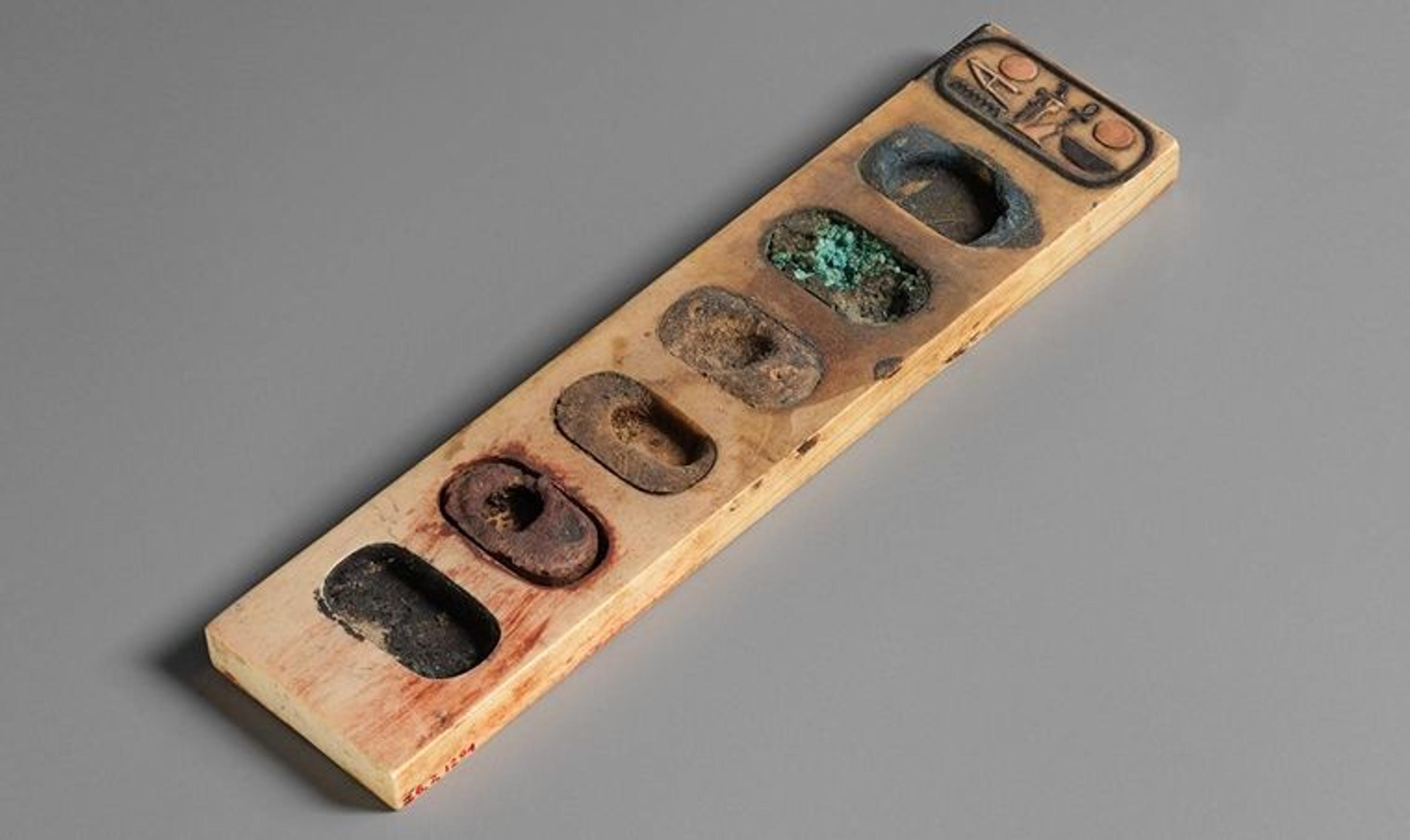
Painter's Palette Inscribed with the Name of King Amenhotep III, ca. 1390-1353 B.C. From Egypt. Ivory, pigment, 6 7/8 x 1 3/4 x 3/8 in. (17.5 x 4.4 x .9 cm). The Metropolitan Museum of Art, New York, Purchase, Edward S. Harkness Gift, 1926 (26.7.1294)
Ancient Egyptians painted with brushes, just like we do now. Their brushes were made out of bundles of plant materials like grasses and reeds, using a string to bind brush materials together.

Ancient Egyptian paint brushes from the collection of the British Museum, London, EA36893, EA36892, and EA36889, image ©Trustees of the British Museum
Let’s make our own brushes! Here are some ideas for natural or household materials you can use to create a brush: broom bristles, dry grass, reeds, a stick with frayed ends, string, rope, straw, or anything else you can find that will hold paint!
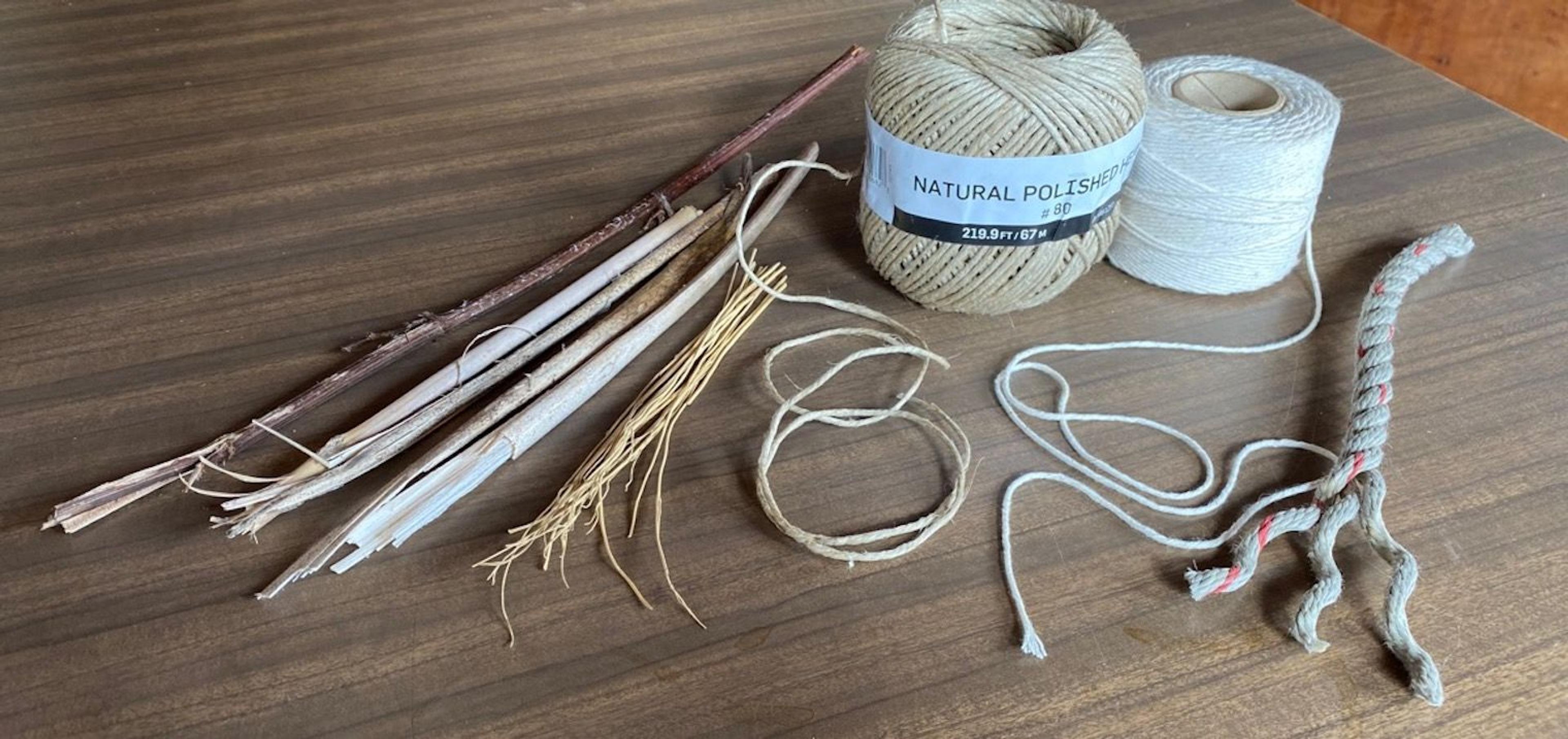
Once you’ve gathered your brush materials, bundle them together, then bind them with something flexible like string and trim off the loose ends.

Now that you've got your brush, it's time to paint!
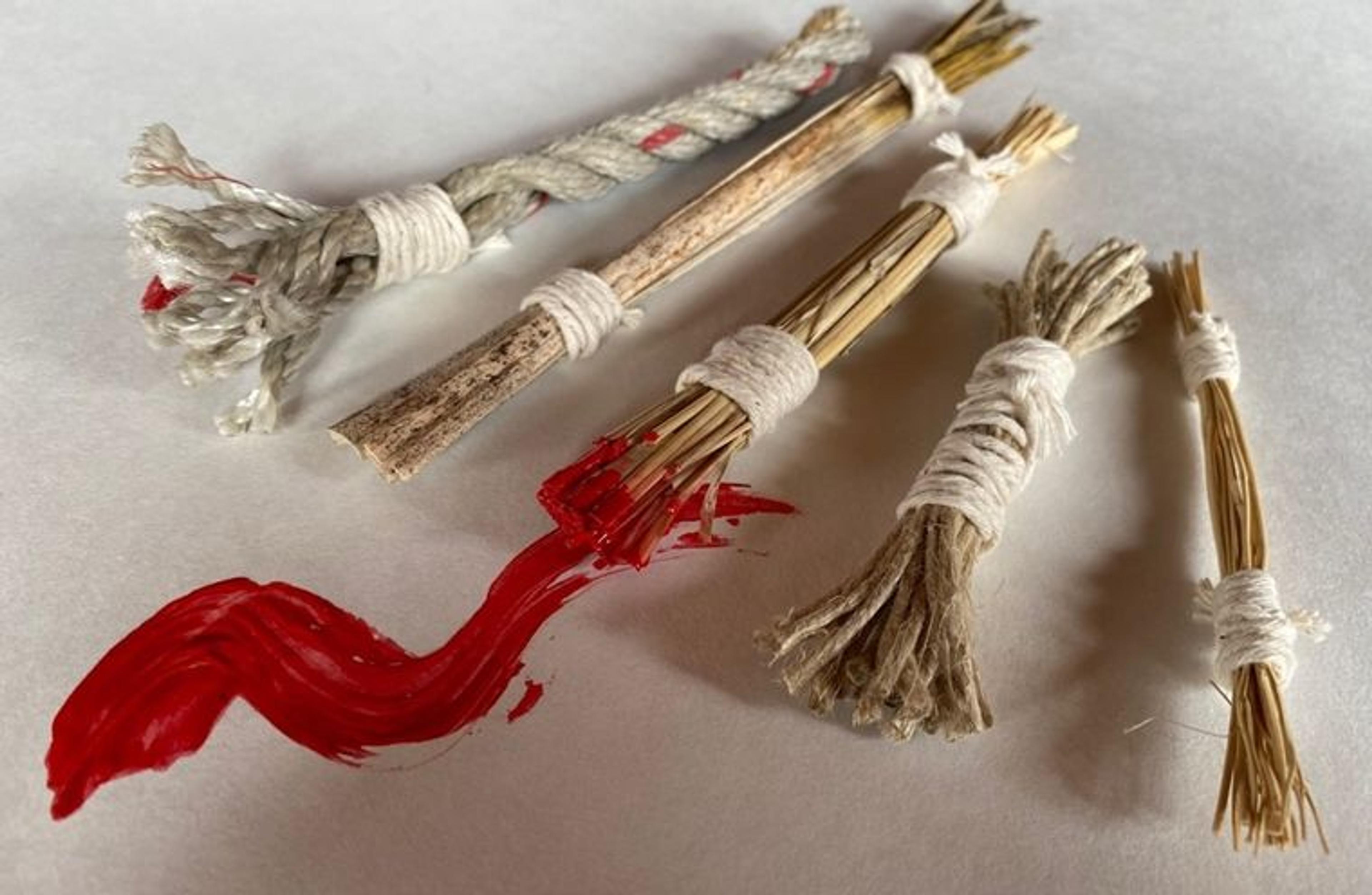
Photo by Anna Serotta
The image below shows the typical steps of making a painting on wood.

Photo (and painting) by Anna Serotta
First, the surface is smoothed. For wood, this sometimes means adding a layer of linen (a type of fabric) and then a layer of gesso (pronounced jeh-so). Gesso is a white material used to make a smooth surface for painting. In Egypt this was often made from the mineral gypsum mixed with glue. The artist then paints a background color followed by an outline in red or black. The colors are then filled in one by one; here red was painted first, then green, then blue. Sometimes a layer of varnish or other coating is added on top.
Next, let’s get painting. You’ll need the brushes you just made ("modern" brushes will do, too), paint of any type, and a piece of paper or wood. Now it's your turn to have fun painting like an ancient Egyptian! This is a step-by-step painting of the sun god with the head of a falcon. Do you recognize this sun god from any of the art above?

Painting by Anna Serotta
Explore more Egyptian Art at #MetKids, then send your artwork to metkids@metmuseum.org for a chance to be featured on our site!
For more brush-making tips, check out these great videos made by our friends at The Fitzwilliam Museum in the United Kingdom.
Interested in chemistry? Here's a great resource to learn more about pigments and paint-making through history.
Anna Serotta
Anna Serotta is a conservator in the Department of Objects Conservation.
Julie Seibert
Isabel Stünkel
Isabel Stünkel is an associate curator in the Department of Egyptian Art.